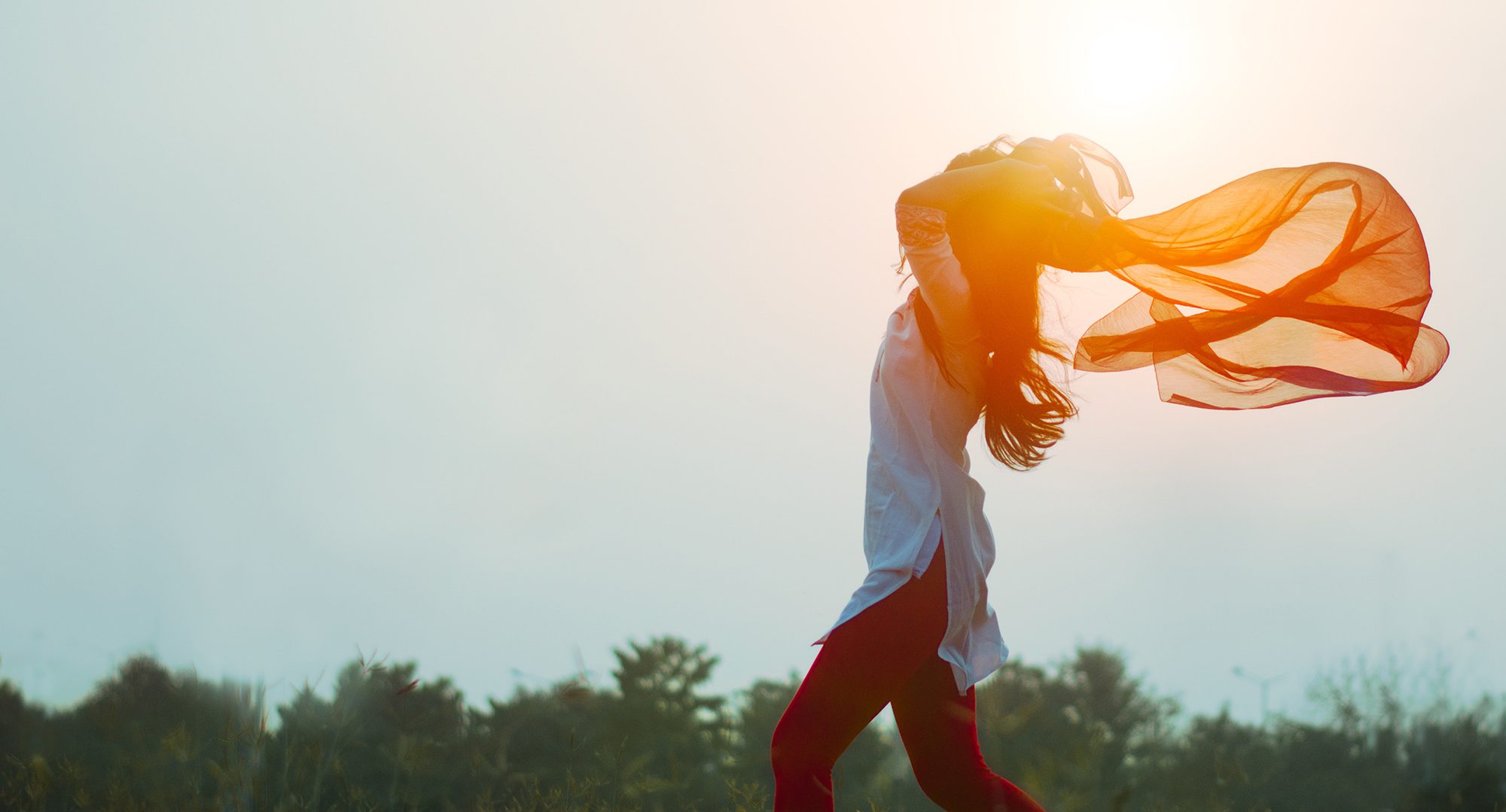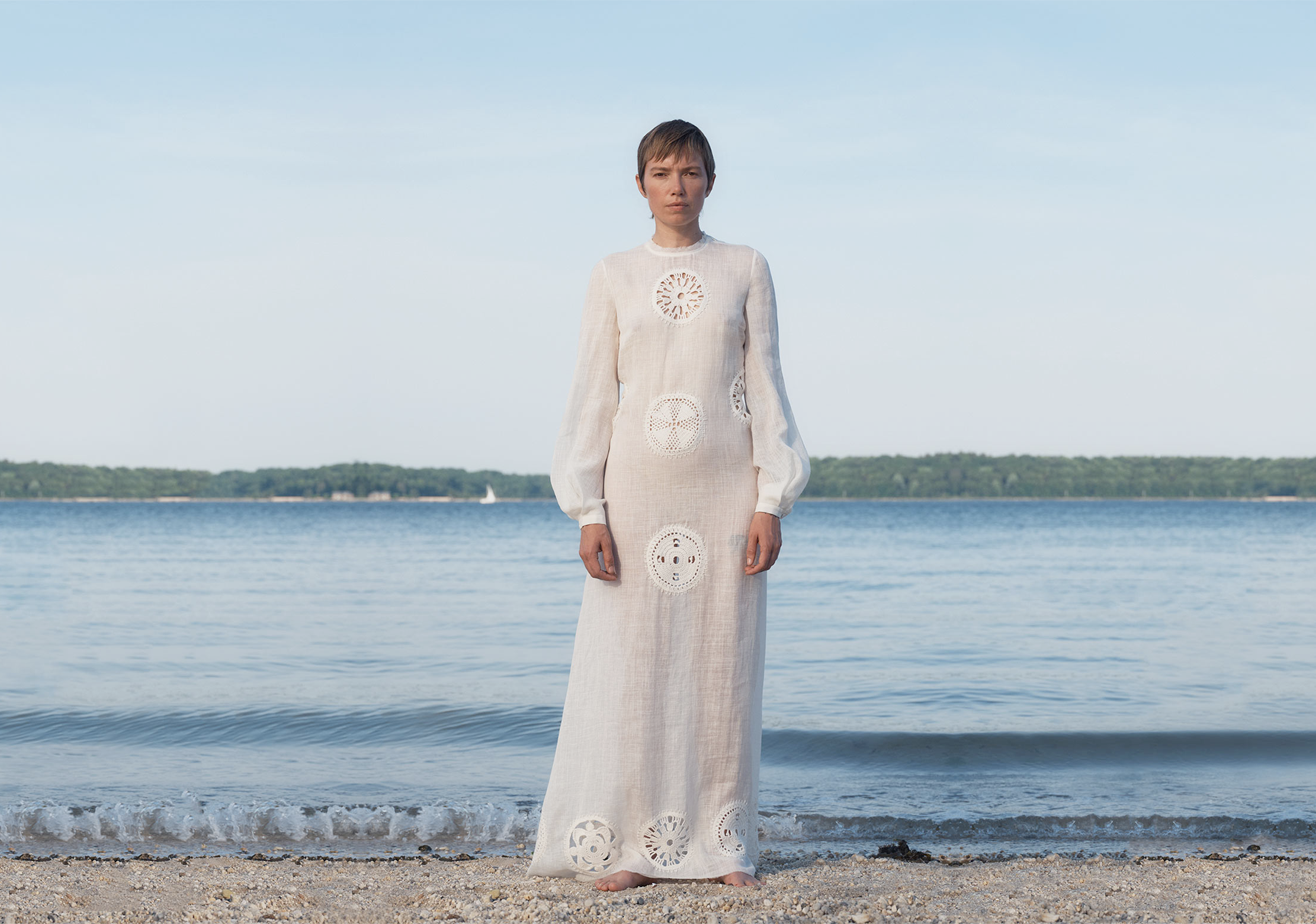“It’s as simple as – we just need to change our habits”. Gabriela Hearst is a New York City-based luxury fashion brand founded by Gabriela Hearst with roots in Uruquay. She recently became the head designer of Chloé in Paris, which she transformed into a B-Corp company within two years. We can all learn a lot from Gabriela, whether as a designer, producer or consumer. So let’s take a look.
The last time we saw Gabriela was at the Vouge Next Summit in autumn 2021. Gabriela Hearst is a luxury brand for women’s and men’s fashion and accessories based on the principles of timelessness, uncompromising quality and sustainability. It was founded in 2015. The brand places great emphasis on the quality of its designer pieces with a low environmental impact and long life. The brand was the first to hold a carbon neutral fashion show. It sources the wool and leather for its collection from Hearst’s own ranch in Uruquay, knowing exactly where the materials come from. The brand appreciates the value of the materials by reusing dead surplus and upcycling them for the new collections. It uses only compostable Tipa bioplastic for packaging and hangers made from recycled cardboard. In addition, the shop was built without synthetic materials or chemicals, using natural, untreated reclaimed oak wood, and light sensors are installed throughout the space to reduce electricity consumption. 90% of the material waste generated during the construction process was recycled.
At Gabriela Hearst, you are informed about the materials and suppliers throughout the entire value chain. Completely transparent we learn about the factories and mills from every step like dyeing, weaving, finishing. For Gabriela it is very important to know where the fibres come from and under what conditions they were obtained. At Gabriela Hearst, they consider using linen instead of cotton, which requires less water and can be grown nearby. To achieve their core sustainable value, craftsmanship plays a big role – the pieces should be well made and last a long time.
The brand works with small family businesses and social institutions like Manas del Uruquay to train women and empower them to be independent. So their work also has a social impact. Last Christmas season, the brand donated 100% of the net proceeds of all products in its flagship stores and on its website to Save the Children to support child nutrition and relief efforts in Yemen. Gabriela Hearst works as an ambassador for Save the Children.
Further, Gariela Hearst focuses on slow growth and running a family business. She also makes her research results available to partners and works with them to achieve their goals. Collaboration and communication play an important role in her sustainability journey.
In addition, Gabriela Hearst wants customers to buy only one piece per collection. This fits very well with the idea of conscious consumption. Not only do we need to buy sustainable new things, but we also need to think about the amount of consumption. We can’t achieve the sustainability goals without consuming less.
For Gabriela Hearst, certification plays an important role. The farm in Uruguay is certified. As head designer at Chloé, she was also the first luxury brand to achieve B-Corp certification. B-Corp certifies the company’s overall social, environmental and economic performance, emphasising public transparency and legal accountability. In her opinion, it’s good to have independent agencies to verify your sustainability missions. This is really great, and other brands have started to follow.
Gabriela has a deep understanding of nature and sustainability. She sees this as a holistic approach. The good thing is that she doesn’t stop at her brand, but also gets active in her private life and, for example, picks up plastic waste on the coast while on holiday.
Gabriela Hearst recommends staying curious and paying attention to the issue of sustainability. From her point of view, it is very important to ask questions, to inform oneself and to understand the roots of the climate problem. She says that data helps a lot in identifying sustainability issues and that education is key. She sees the need to educate consumers to live in harmony with nature, to be open-minded and to find creative solutions.
Gabriela suggests, that people who want to become more sustainable should simply ask themselves: How can I do something better? What can I change? These can be “low hanging fruits”, things that can be easily adjusted but have an impact. And of course you should think about the impact of e.g. CO2 impacts of your daily and business life. Identify the contributors to CO2 emissions and reduce them. And then, once you have figured that out, change your habits, step by step. It starts with taking responsibility and doing our part, like she does.
photo copyright Gabriela Hearst 2022


